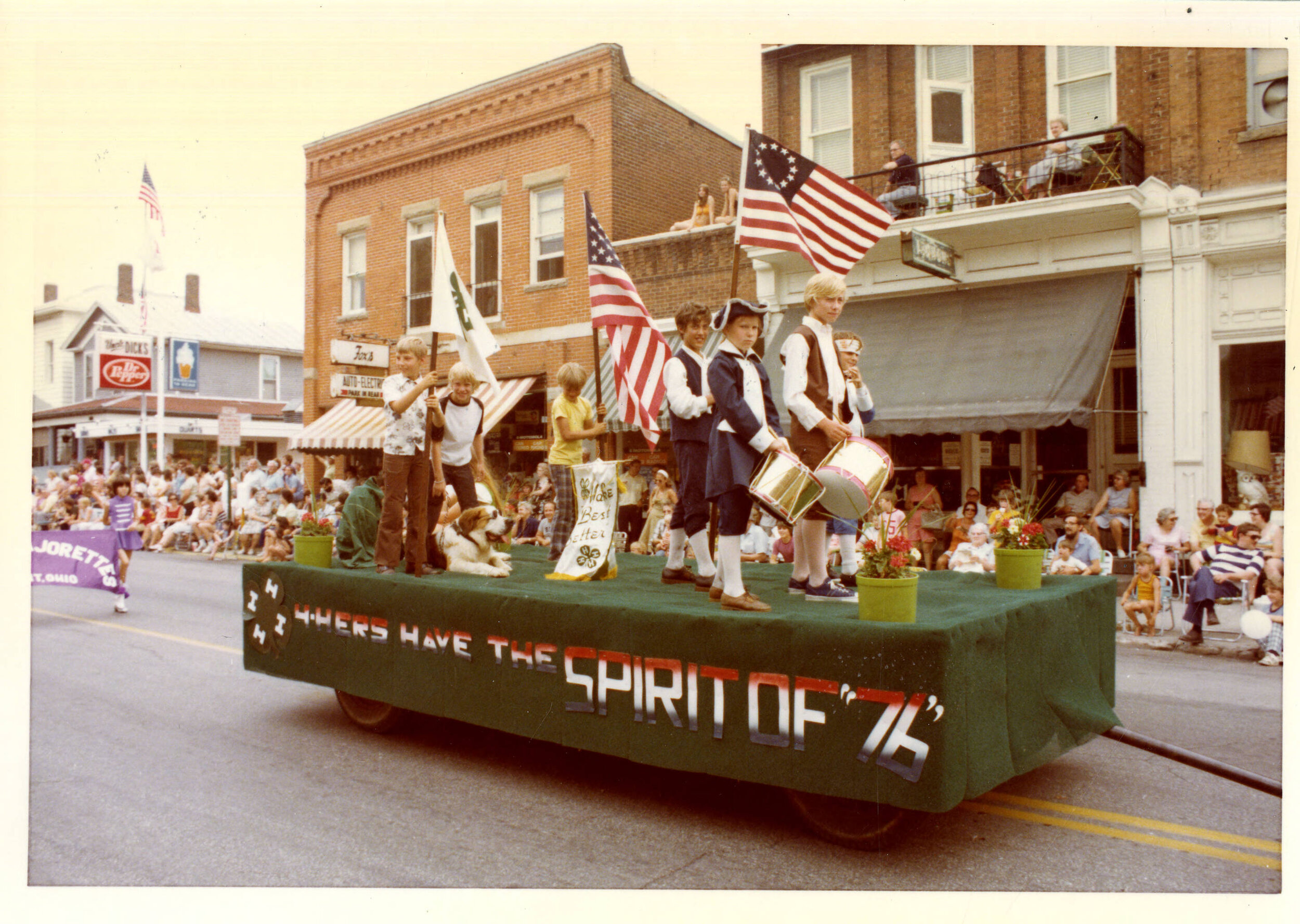By Emily Rinaman, Technical Services Librarian
A 1967 muscle car slowly creeps by, the person in the passenger seat waves. The sound of trumpets and drums fill the air followed by the backfire of an antique tractor. What is happening? It’s just the sights and sounds of your every-day American parade.
While “every day” seems like an exaggeration, it almost isn’t. Americans have been hosting parades for every holiday under the sun. Holidays almost seem like an excuse to have a parade in the American custom. The Rose Bowl Parade ushers in the New Year on Jan. 1, then a big Mardi Gras parade in New Orleans on Fat Tuesday follows. Next in line is St. Patrick’s Day parades, parades commemorating Memorial Day, Independence Day and Labor Day.
Tiffin throws in a Halloween-themed parade in mid-October, and Macy’s Thanksgiving Day parade and smaller Christmas parades round out the year, only to be circled around again. But wait, what’s missing? Oh! How could I forget? The Heritage Festival parade every September in Tiffin, which had been held annually since the early 1980s until 2020. The first Heritage Festival parades began at Westgate Shopping Center and proceeded east on Market Street before eventually turning left on Frost Parkway. Now, they are practically held on the opposite side of town.
In addition to holidays or festivals, parades have been held on special occasions like anniversaries of events or honoring military feats.
One of the earliest parades in Tiffin was on July 3, 1885, which culminated with the unveiling of a Civil War monument. On May 26, 1899, a welcome home parade was held in Fostoria for the return of Company 6th Ohio volunteer infantry from its campaign in Cuba during the Spanish-American War. When the United States entered World War II, Tiffin saw a Savings Stamp parade in 1942.
The Junior Home, where Tiffin’s Halloween parade now begins and ends, hosted several parades throughout its years of existence. In 1915 when The Ohio School was completed, a parade was part of the dedication services. At the time, it was “the largest parade ever seen in Tiffin.” A few decades later in June 1936, it was hosting annual beneficiary picnics with a parade. Prizes were awarded for the groups in the parade who had traveled the farthest to attend the picnic and the largest group in the parade.
A sesquicentennial parade in celebration of the founding of Seneca County in 1817, was held in June 1967. This parade took vintage autos down Jefferson, Main, Washington, Sandusky and Market Streets, skirting through the Six’s Corners intersection on its way to Westgate Shopping Center. A separate parade of antique farm equipment took a route from St. Joseph’s Catholic Church to the Seneca County Fairgrounds.
Many cities and villages across the United States held a 1976 Bicentennial parade, and Tiffin was included. Amidst the bands and antique cars were suffragettes. Not exactly real ones but local women who dressed as them to commemorate those who fought for women’s voting rights in the 1920s. Clad in period costume like the ones women wore in the infamous March 3, 1913 March on Washington, the League of Women Voters float won a trophy. Its guest star? Louisa K. Fast, Tiffin’s very own real suffragist (now deceased). (The 1913 “parade” in our nation’s capital included 9 bands, 4 mounted brigades, 24 floats and 5,000 marchers).
Just like the parade in Fostoria embracing soldiers returning from Cuba, “victory parades” were often held when wars ceased. These parades were held at the end of both World War I and World War II.
No parade would be complete without a band and this feature somewhat stemmed from such military-oriented parades. At one time, Tiffin Columbian had a Drum and Bugle Corps which publicly performed (the Troy Ohio Drum and Bugle Corp had also performed in Tiffin at one time). Bugle corps first became popular when veterans of the Spanish-American War and World War I pooled together to play as a band for civilians. Civilians were enamored and started to form their own bands; many that exist today have developed out of bugle corps originally founded by American legions across the country and Veterans of Foreign Wars.
Another type of band that had been seen often in parades of Seneca County was polka bands, due to the immigrants bringing this style of music with them from their home countries. Bascom once had its very own polka band, the Polkadot Band, who traveled as far as Toledo, and also performed at county fairs. Polka bands blossomed in the 1920s, and Bascom’s band was still active during the time when the popularity of Polka reached its height in the 1950s.
Everyone has his or her own favorite part of a parade, whether it’s a cleverly-decorated float, a classic car, or a musical performance, but the overall spirit of a parade never disappoints.
Works cited:
Fourth Annual Heritage Festival 1817-1982. https://ohiomemory.org/digital/collection/p15005coll27/id/27555/rec/1
Seneca County Museum Newsletter Winter 1995-1996. https://ohiomemory.org/digital/collection/p15005coll27/id/43132/rec/1
League of Women Voters 10 Years. https://ohiomemory.org/digital/collection/p15005coll27/id/63543/rec/2
Junior Home 6th Annual Beneficiary Degree Picnic June 1936. https://ohiomemory.org/digital/collection/p15005coll27/id/25238/rec/1
Bascom Then and Now. https://ohiomemory.org/digital/collection/p15005coll27/id/29193/rec/1
National Orphans Home. Junior Home Dedicatory Services of Ohio Memorial Church and School 1928. https://ohiomemory.org/digital/collection/p15005coll27/id/4239/rec/1
Fostoria Centennial Souvenir Program and History, 1954. https://ohiomemory.org/digital/collection/p15005coll27/id/31551/rec/1
Tiffin-Seneca Sesquicentennial 1817-1967. https://ohiomemory.org/digital/collection/p15005coll27/id/25130/rec/1
History of Tiffin Fire Department 1843-1993. https://ohiomemory.org/digital/collection/p15005coll27/id/32508
“Drum and Bugle Corps (classic)” Wikipedia. https://en.wikipedia.org/wiki/Drum_and_bugle_corps_(classic)
Marching for the Vote: Remembering the Woman Suffrage Parade of 1913. Library of Congress. https://guides.loc.gov/american-women-essays/marching-for-the-vote
Valencic, Joseph. “Polkas.” Encyclopedia of Cleveland History. Case Western University. https://case.edu/ech/articles/p/polkas
Farmer’s Almanac. “Love a Parade? Here’s Why we Have them.” 25 March 2021. https://www.farmersalmanac.com/parades-35497


